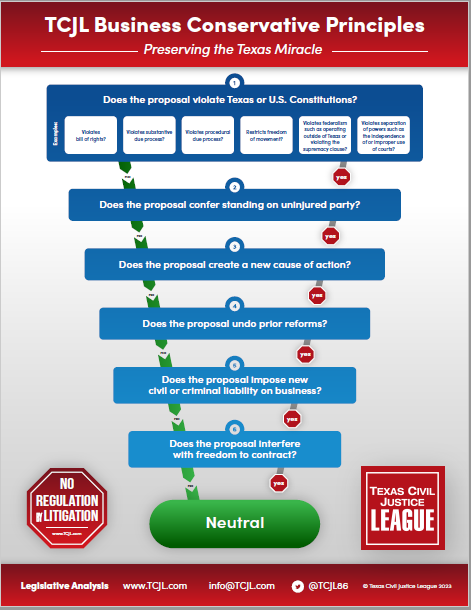 TCJL has filed an amicus curiae brief with the Texas Supreme Court in a critically important case involving the proper interpretation of § 52.006, CPRC, which caps the amount of a supersedeas bond at $25 million.
TCJL has filed an amicus curiae brief with the Texas Supreme Court in a critically important case involving the proper interpretation of § 52.006, CPRC, which caps the amount of a supersedeas bond at $25 million.
As you may recall from our prior reports on the case, In re Greystar Development & Construction, LP; Gabriella Tower, LLC; and Greystar Development & Construction, LP—Gabriella Tower Contractor Series (No. 24-0293) involves a dispute between judgment debors and judgment creditors over whether the joint bond in the amount of $25 million posted by the debtors suspended enforcement of the judgment as to all judgment debtors or whether each debtor had to post security separately. The trial court ruled that each debtor had to post a separate bond. The judgment debtors filed a Rule 24.4 motion requesting the court of appeals to reverse the trial court and confirm the sufficiency of the $25 million joint bond as to all all debtors.
In an opinion by Justice Breedlove, the court of appeals affirmed the trial court’s ruling. The court observed that there is a “split of authority on whether the $25 million statutory cap in § 52.006 . . . applies per individual judgment debtor or per judgment,” with the judgment debtors relying on a San Antonio Court of Appeals decision and the judgment creditors leaning on a contrary opinion by the Tyler Court of Appeals. The Dallas court sided with Tyler, which concluded that when read as a whole, Chapter 52, CPRC, refers to security posted by a judgment debtor, not judgment debtors as a collective group. This choice of the singular in the plain language, the court concluded, indicated the Legislature’s intention “that the $25 million limitation be applied per judgment debtor rather than per judgment.” The court noted further that the San Antonio court itself split on the issue, with (now) Chief Justice Martinez in dissent. Justice Martinez’s dissenting opinion took the Tyler court’s view of the statute as well. Greystar sought mandamus relief from SCOTX, which issued a stay last May pending consideration of the petition.
As you may also recall, the revision to § 52.006(b) capping the amount of the bond constituted a fundamental part of HB 4, the 2003 tort reform legislation. Our brief argues that not only does the plain language of the statute impose a total cap of $25 million, regardless of how many judgment debtors there may be, but that is the only interpretation of the statute that makes any sense. As we state in our brief:
The court of appeals makes much of the language of Subsection (b)(1), which does tie the amount of a security to “the judgment debtor’s net worth.” This option makes perfect sense because the purpose of Subsection (b)(1) was to permit a lesser amount of security than a one-size-fits-all $25 million cap would provide. It goes without saying that when it enacted § 52.006 the Legislature knew very well that litigation regularly produces more than one judgment debtor. It also knew that in order to make the statute as effective as possible in preserving a judgment debtor’s right to appellate review, it needed a dual approach, one that provided a cap based on an individual judgment debtor’s net worth and the other a straightforward cap based on the amount of the judgment itself. To put it another way, as far as the statute is concerned, it doesn’t matter what resources a judgment debtor may or may not have to put as security. What matters is that the statute gives judgment debtors the choice to limit their liability for the bond so that they may continue to do business pending the outcome of their case. In a case in which one or more judgment debtors have low net worth, it may make sense to pick option (1). In such a case the total amount of security may even reach $25 million, depending on how much each individual debtor owed to the pot. But in cases involving one or more debtors with higher net worth, the judgment-based cap is the better option because it both lowers the debtor’s liability and avoids a slew of expensive and time-wasting satellite litigation to determine what a judgment debtor’s net worth actually is and how much of the security each judgment debtor is responsible for. Section 52.006(b)(2) relies on two easy-to-ascertain numbers: the amount of the judgment and $25 million. That’s the end of the inquiry, as the Legislature intended.
If you are interested in other things we said in the brief, you can refer to the attachment.
